Okra doesn’t get nearly enough credit.
Sure, it’s got that whole slimy-in-gumbo reputation (which, by the way, is totally avoidable), but this tall, heat-loving plant is tough.
It loves the summer sun, produces plenty of pods, and with the right companions, it really helps your garden shine.
And yes, neighbors matter. A lot.
Some plants bring out the best in okra. They loosen the soil, repel pests, shade the roots, or even sneak a little extra nitrogen into the dirt like friendly little fertilizer elves.
Others? Not so helpful. Some invite in nasty nematodes, steal nutrients, or just sprawl all over the place like a bad roommate who never does the dishes.
So if you’re planting okra this season (and you should be), it pays to know who to plant nearby and who to politely kick out of the bed.
Let’s dig into 15 of the best companion plants for okra – and a few that are total troublemakers.
15 Best Companion Plants for Okra (These Ones Get It)
Some plants just vibe with okra. They boost its growth, protect it from pests, and generally make life easier in the garden.
Whether it’s breaking up tough soil, warding off bugs, or offering just the right kind of shade, these green buddies bring their A-game.
Let’s meet the okra allies you’ll want by its side:
1. Radishes
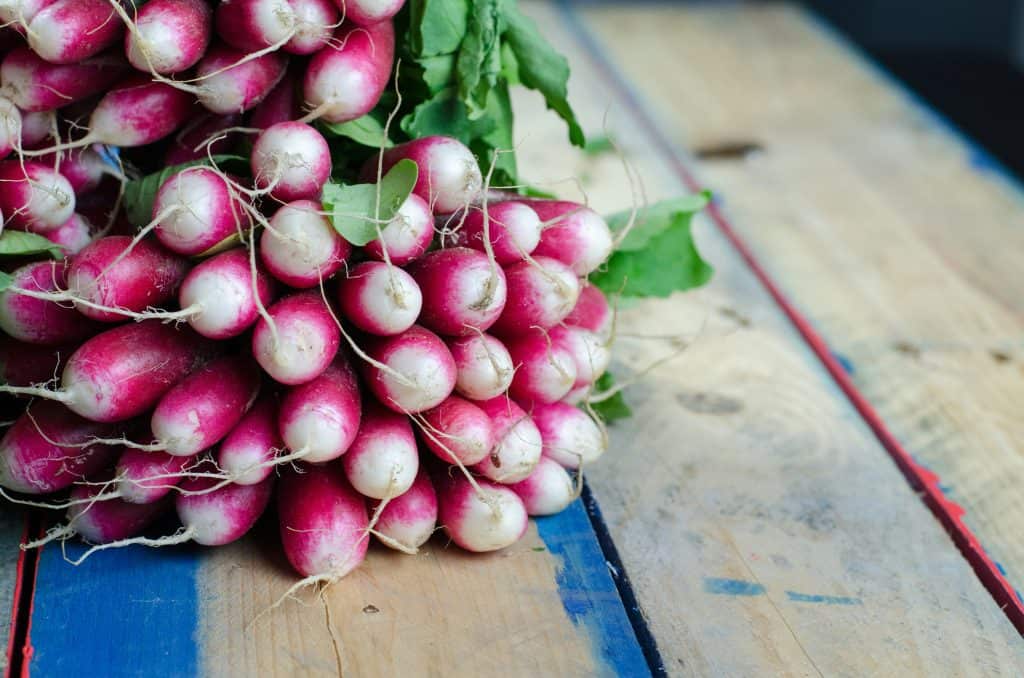
Radishes are the garden’s overachievers. They grow fast, dive deep, and make room where room didn’t exist.
Their taproots bust through compacted soil like nature’s tiny jackhammers, which is exactly what okra roots need to stretch out and thrive.
But here’s the sneaky bonus – radishes are also a favorite snack for flea beetles. Instead of feasting on your tender okra leaves, those pests take a detour to the radish buffet. That’s what gardeners call a “trap crop,” and it’s basically decoy warfare.
Also: you get radishes way before your okra’s even thinking about flowering. Plant, harvest, repeat. No competition. Just collaboration.
2. Cucumbers
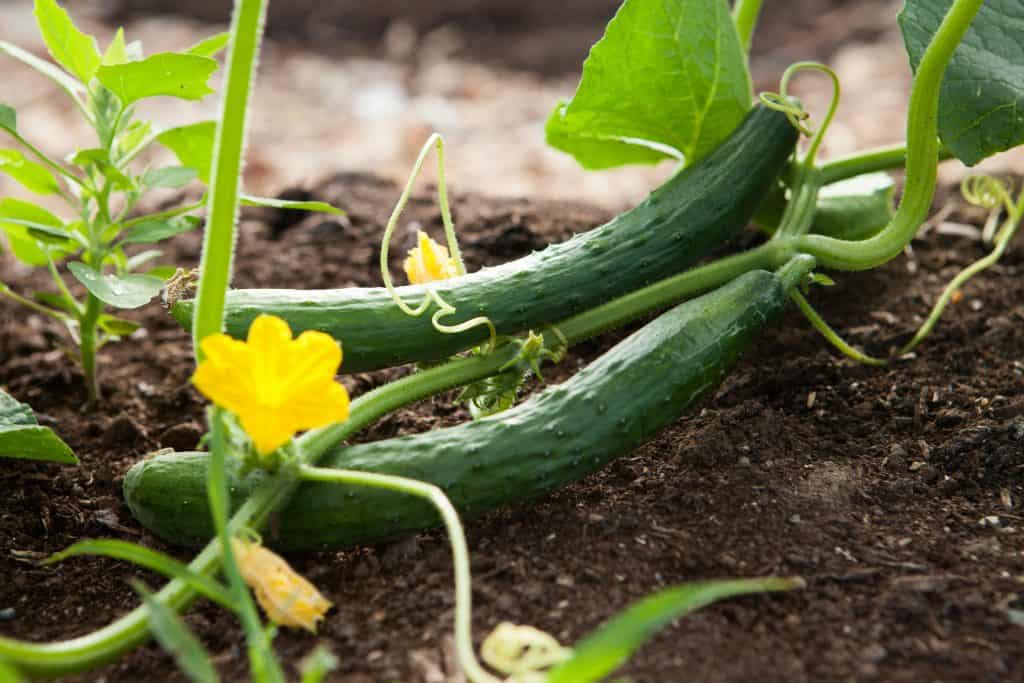
Cucumbers and okra? In many ways, a dream team.
They both love water. They both thrive in rich, loamy soil. And when cucumbers vine out and sprawl, they actually protect the base of okra plants by shading the soil, locking in moisture, and telling weeds to scram.
Oh, and the cucumber leaves? They’re like leafy little parasols, offering just enough ground cover to keep things cool without getting in the way.
But (and this is a pretty big but)… cucumbers can be needy. They’ll fight for sun, space, and sometimes spread powdery mildew around like it’s a party favor.
So this one’s a conditional friendship. Keep it in check, and it works beautifully.
3. Peppers

Sweet or spicy, peppers bring more than just flavor – they bring protection.
Cabbage worms (aka okra’s mortal enemies) apparently can’t stand peppers. Planting a few nearby acts like a natural pest repellent, keeping those little leaf-nibblers at bay.
Bonus: okra’s height offers a nice windbreak for delicate pepper stems.
The catch? Peppers are a little dramatic themselves. They’ve got pest baggage (hello, nematodes), and if your soil’s already on edge, pairing them with okra might just tip it over.
Still, if you’ve got healthy ground and good airflow, it’s a spicy synergy worth trying.
4. Peas
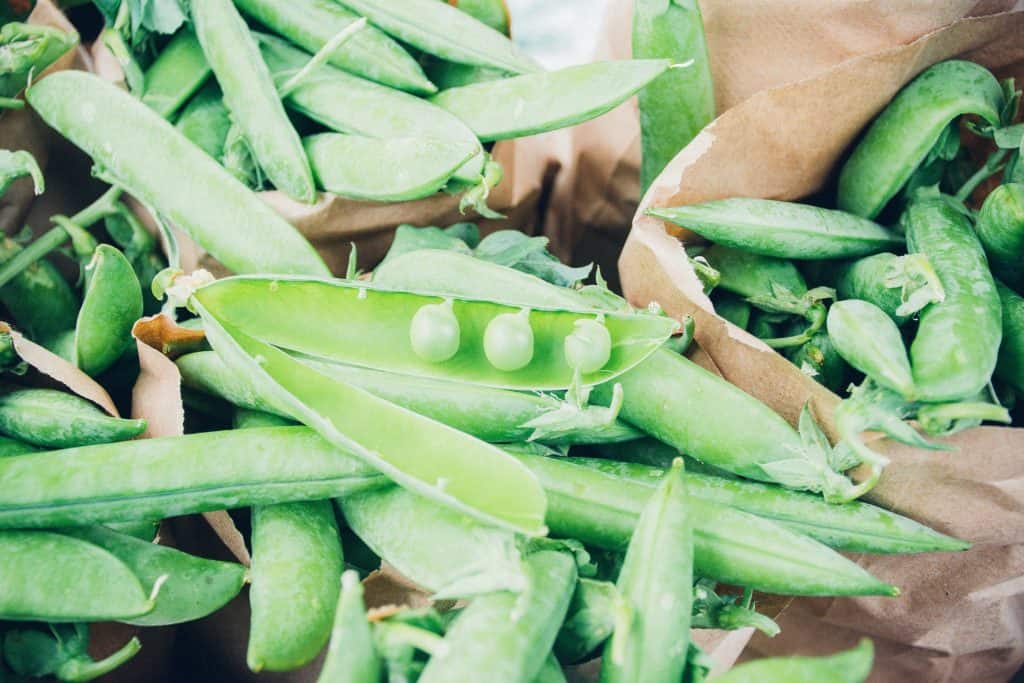
Peas are the laid-back early birds of the garden.
They show up in spring, do their thing, and head out before the okra even breaks a sweat. No competition. No drama. Just solid teamwork.
And the best part? Peas fix nitrogen in the soil like little green alchemists turning air into plant food. Okra loves that. Also, vining peas can use tall okra stems as a casual trellis. It’s mutual benefit with zero turf war.
5. Melons

Okra shoots up. Melons spread out. It’s a classic tall-and-wide pairing that actually works.
Melon vines blanket the ground, creating a natural mulch that smothers weeds and keeps the soil from drying out.
Their giant leaves act like little canopies, shielding the earth from blazing sun. Meanwhile, the okra towers above, catching light and casting helpful afternoon shade on the melon patch below.
They both adore heat. Both crave sun. Both slurp up water like it’s their job. Just make sure you give them space – melons aren’t exactly shy.
6. Lettuce
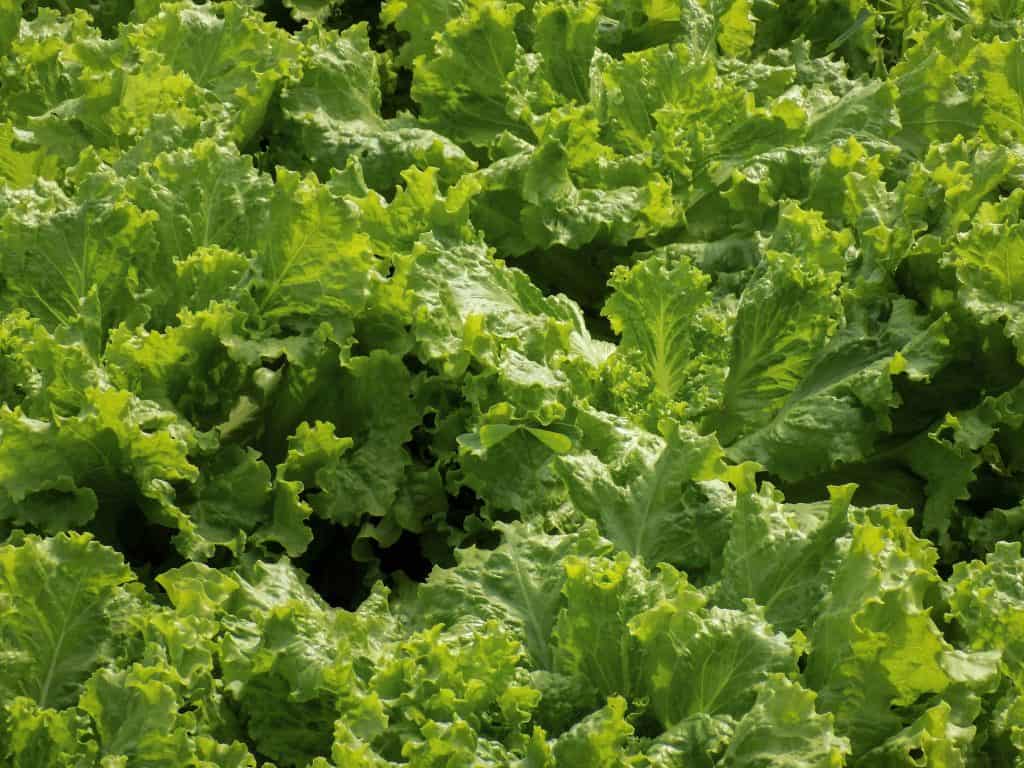
Lettuce loves cooler conditions. Which is… kind of a problem in the middle of summer when okra is hitting its stride. But plant them together, and it works out surprisingly well.
Okra shoots up fast and throws just enough shade to keep lettuce from bolting too early. That means crisper leaves and a longer harvest window, especially if you're tucking lettuce into the spaces between okra plants.
They also play nice underground. Lettuce has shallow roots and doesn’t need a ton of nutrients, so it won’t compete with okra’s deeper, hungrier system.
The only real thing to watch? Water. Lettuce gets bitter and floppy if it dries out, so don’t slack on irrigation if you're growing the two side by side.
7. Basil
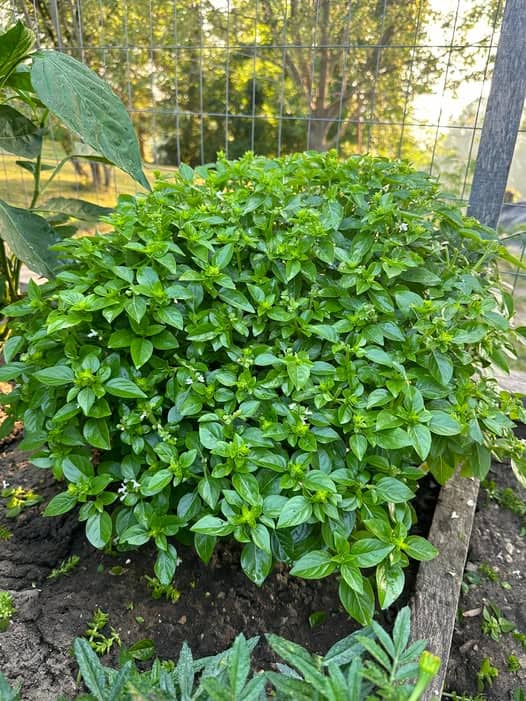
Basil is one of those herbs that earns its spot in almost every garden and especially near okra.
First, it helps with pests. Basil gives off a strong scent that seems to mess with insects like aphids, whiteflies, spider mites, and stink bugs.
That alone makes it worth planting. But there’s more. When basil flowers, it pulls in bees and other pollinators, which makes a difference in how well your okra sets pods.
It also doesn’t crowd. Basil grows compact, doesn't sprawl, and doesn’t compete much for water or nutrients.
Plus, it appreciates some light shade during peak heat – which okra can provide as the summer wears on. Overall, it's a simple, low-maintenance win.
8. Zinnias

Zinnias aren’t just there to look pretty (though they do look pretty). These bright, cheerful flowers are some of the best pollinator magnets you can grow.
Bees, butterflies, hoverflies – they all love zinnias, and once they’re in the garden, they’re more likely to check out your okra blooms too. Better pollination = better pods. It’s a direct benefit.
Zinnias also seem to act as decoys for certain pests, like whiteflies, pulling them away from your vegetables.
They're low-maintenance, love heat, and don’t interfere with the okra’s root zone or growth. If you’ve got the space, toss some in. It’s all upside.
9. Oregano
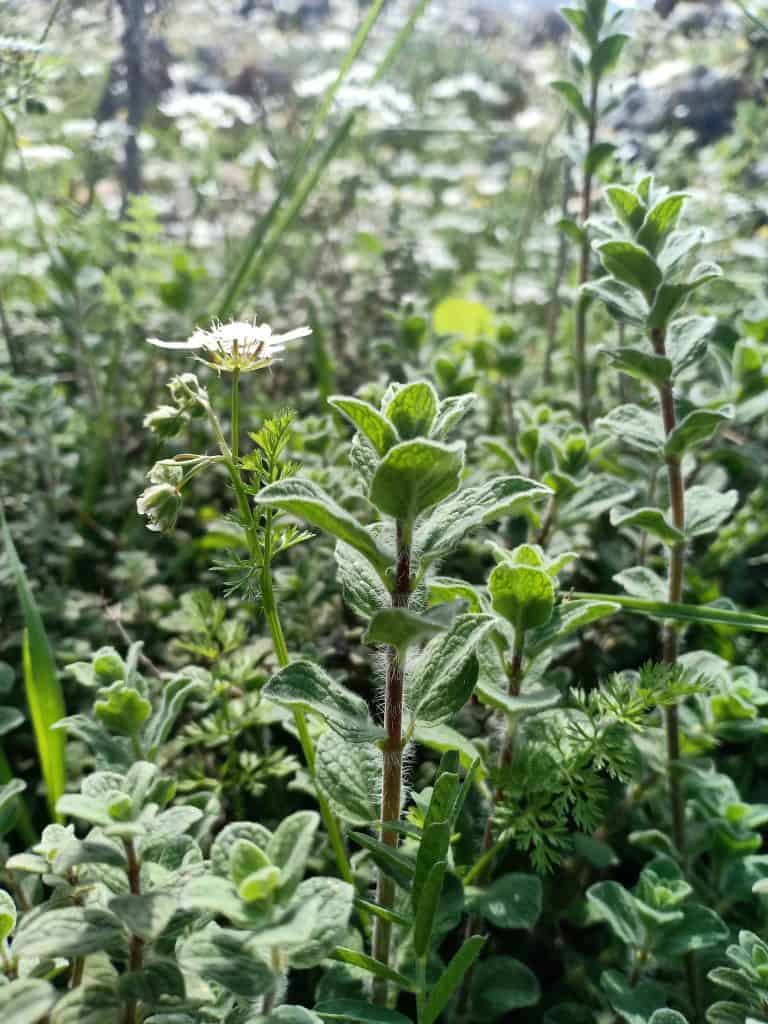
Oregano is one of those under-the-radar companion plants that does more than you'd expect.
For starters, it forms a nice low-growing mat around taller plants like okra, which helps block weeds and keeps the soil from drying out too quickly.
It’s also a natural pest repellent. The strong smell seems to confuse or deter bugs that might otherwise zero in on your okra. And when oregano flowers, it brings in helpful insects, too.
It’s super easy to care for – doesn’t mind heat, doesn’t mind a bit of drought, and won’t compete with deeper-rooted vegetables.
In a mixed bed, it’s the kind of plant that quietly supports everything else without demanding attention.
10. Sunflowers
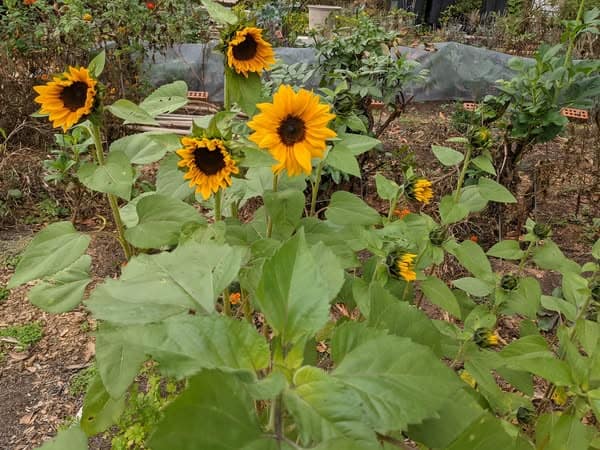
Sunflowers and okra don’t look like an obvious match, but they actually complement each other well.
Sunflowers are pollinator magnets. Bees especially flock to them, and when you’ve got that kind of activity nearby, it benefits everything around – including your okra plants. More bees in the area means more flowers pollinated, which means more okra pods.
They also provide structure and shelter. If your garden is in a windy spot, planting sunflowers along the edge can help shield more sensitive plants from gusts.
Just don’t crowd them in too close – sunflowers can throw shade as they mature, and okra still wants full sun to thrive.
11. Beans

Beans and okra make a solid team, especially in terms of soil health. Beans are legumes, which means they naturally enrich the soil by fixing nitrogen.
Okra’s a heavy feeder, so that extra nitrogen goes a long way toward keeping it growing strong all season.
There are a couple of ways to go about this. Bush beans stay low and help suppress weeds around the base of okra. They also shade the soil, helping retain moisture during hot stretches.
Vining beans, on the other hand, can actually use the okra stalks as support if planted close together – though you’ll want to keep an eye on things to avoid tangling.
It’s a mutually beneficial relationship, as long as you give them both enough space to breathe.
12. Cosmos
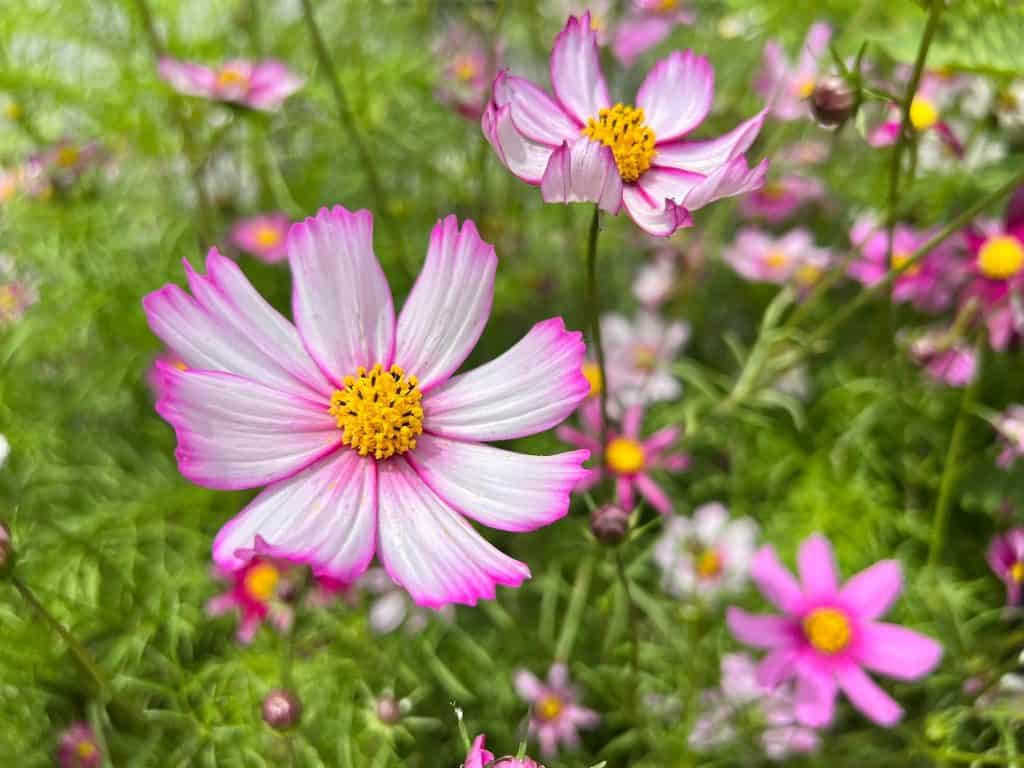
Cosmos are flowering annuals that attract bees, butterflies, and other helpful insects and that alone is enough reason to plant them near your okra.
Pollinators visiting cosmos are likely to hop over to your okra flowers while they’re in the neighborhood, which helps improve pod production.
Cosmos are also known to attract predatory insects like lacewings and parasitic wasps. Those guys don’t bother your veggies but they do go after pests like aphids and caterpillars. That’s a win.
They grow easily in full sun, don’t take up much space, and don’t compete for nutrients. It’s a set-it-and-forget-it kind of plant that quietly boosts the rest of your garden.
13. Eggplant
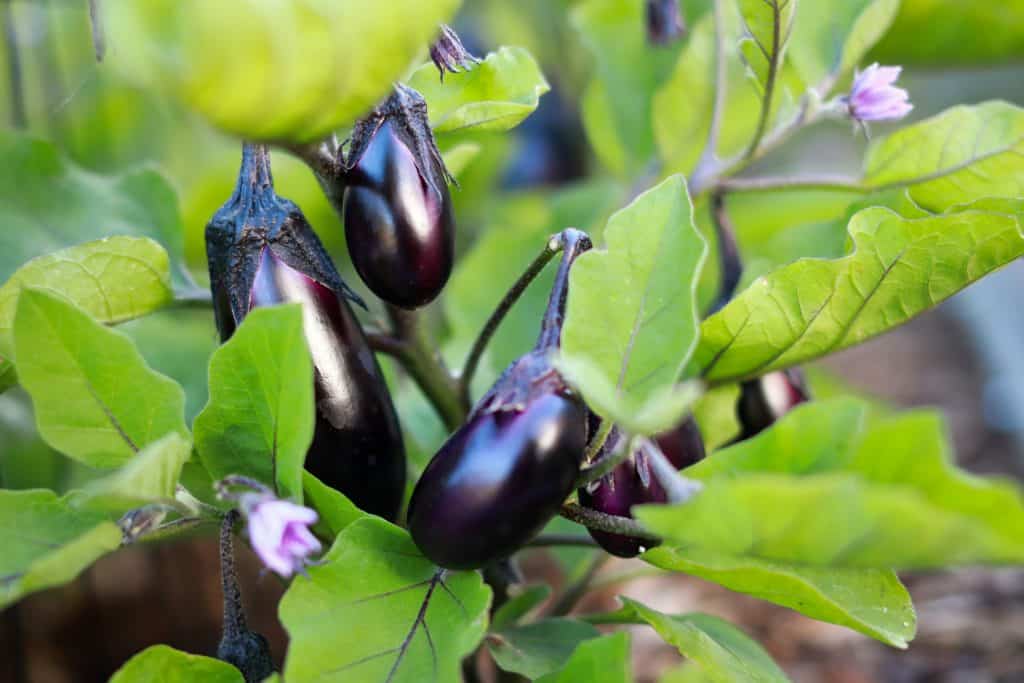
This one’s a little controversial. Some gardeners swear by pairing eggplant with okra, others avoid it entirely. Let’s break it down.
Eggplant and okra have similar water and sunlight needs. Both love heat, both appreciate well-drained soil, and neither likes to be crowded.
Eggplant also adds potassium to the soil, which can benefit okra over time. In some setups, eggplant even acts as a trap crop, pulling stink bugs away from other more sensitive plants.
But they also share some of the same pest problems, particularly nematodes and flea beetles.
If those pests are already in your soil, this combo could make things worse. If your garden’s relatively pest-free? It could still work out fine. Just keep an eye on it.
14. Calendula
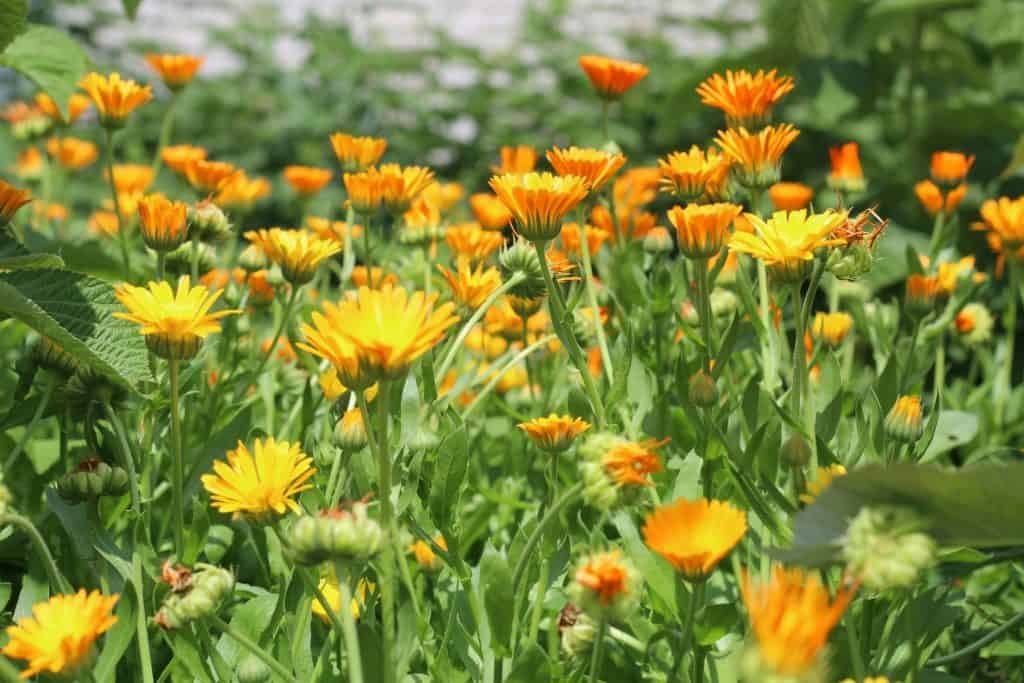
Calendula is one of those companion plants that quietly pulls a lot of weight.
Its bright orange and yellow flowers attract bees and other pollinators to your garden, which helps boost okra flower fertilization.
At the same time, calendula gives off a sticky, resin-like substance that can trap or deter soft-bodied insects like aphids and whiteflies.
It grows low to the ground and spreads gently, helping suppress weeds without crowding your vegetables.
Plus, it’s one of the few flowers that thrives right alongside food crops without demanding much attention. Easy to grow. Easy to love.
15. Marigolds

Marigolds are kind of the classic companion plant, and for good reason.
When it comes to okra, they’re especially helpful for dealing with nematodes – those microscopic pests that live in the soil and mess with root systems.
Planting marigolds around your okra patch can reduce nematode populations over time. And while they’re doing that, they’re also repelling a bunch of flying insects that might otherwise be drawn to your veggies.
They like the same warm, sunny conditions as okra, and their roots don’t get in the way. If you’re not already planting marigolds in your food beds, this might be the year to start.
What Not to Plant Near Okra
Not every plant makes a good neighbor. Some will compete for nutrients, attract the wrong bugs, or introduce problems that okra really doesn’t need. Here are the top offenders to keep far, far away from your okra patch.
1. Squash & Sweet Potatoes


These two aren’t just space hogs – they’re pest magnets. Specifically: nematodes.
Squash and sweet potatoes are notorious for drawing these microscopic root-destroyers into the soil. Once they’re in, they don’t leave quietly.
Okra roots are particularly vulnerable to nematode damage, which makes this a bad mix.
Even if things look okay at first, you might be setting your okra up for stunted growth or nutrient problems later in the season.
So if you’re growing these crops, give them their own space – well away from your okra.
2. Tomatoes

This one’s tricky. Some gardeners say tomatoes help by acting as a “trap crop” for stink bugs. And technically, that’s not wrong – stink bugs love tomatoes. But they also love okra.
So instead of protecting your okra, you might just end up throwing a party for every pest in town.
More importantly, tomatoes and okra both attract nematodes. Planting them side-by-side can lead to a faster, heavier infestation. They also pull a lot of the same nutrients from the soil, which means direct competition.
Short version: unless you have perfect soil and no pest problems (lucky you), it’s best to keep these two apart.
3. Fennel

Fennel is a loner in the garden.
It releases compounds through its roots that can actually stunt the growth of nearby plants. Nobody’s quite sure why it evolved this way but the result is the same: your okra won’t be happy planted anywhere near it.
Honestly, fennel does best in its own space. Think of it as more of a standalone herb than part of your mixed veggie beds.
4. Brassicas (Cauliflower, Broccoli, Mustard Greens, etc.)

Brassicas are heavy feeders. They pull a ton of nutrients from the soil, especially nitrogen – exactly what okra needs to grow strong and productive.
Planting them together creates a resource tug-of-war, and okra usually loses. On top of that, brassicas prefer cooler weather and different growing conditions, so even their seasonal timing doesn't line up well with okra.
If you're growing broccoli or cauliflower, just give them their own bed and let your okra enjoy a little less competition.
Plant smart, pay attention, and let your garden teach you what works.
Companion planting with okra isn’t about following rigid rules – it’s more like matching up personalities.
Some plants help okra grow bigger and stronger. Others protect it from pests, keep weeds in check, or improve the soil. And a few? They just stir up trouble.
If you're planting okra this season (and honestly, you should), take a little time to choose its neighbors wisely.
The right pairings can make your garden more productive, more resilient, and just easier to manage. Fewer pests, healthier plants, better yields. That’s the goal, right?
And hey – don’t be afraid to experiment. Every garden has its quirks. What works in one space might flop in another, so observe, tweak, and grow smarter each season.
Frequently Asked Questions (FAQs)
Got questions about companion planting with okra? Here are clear answers to common concerns, so you can grow a healthier, more productive garden.
Can I plant okra and tomatoes together if I don’t have pest issues?
Technically, yes. If your soil is clean and your pest pressure is low, they can coexist. But they still compete for the same nutrients, so keep them spaced well and monitor for nematodes or aphids.
What’s the best way to space okra with its companion plants?
It depends on the plant. Lettuce and basil can be tucked between okra rows since they stay low and compact. Vining crops (like cucumbers or peas) need more room. Keep at least 12–18 inches between most plant types to avoid overcrowding.
Can I grow okra in containers with companion plants?
Definitely – with some planning. Use large containers (at least 5 gallons per okra plant), and stick with compact companions like basil, oregano, or lettuce. Avoid anything that needs sprawling space or deep roots.
Do I need to rotate okra if I’m companion planting?
Yes. Even with good companions, okra can deplete soil nutrients and encourage pests like nematodes over time. Rotate your okra to a new bed each year, especially if you’ve had any pest problems.
Is there one “best” companion plant for okra?
Not really – it depends on your goals. Want fewer pests? Try basil or marigolds. Better soil? Go with beans or peas. More pollinators? Add zinnias or sunflowers. Think about what your garden needs most, and choose companions that match.
Ready To Transform Your Garden?
Are you looking for the best way to layout your garden beds? Maybe you're feeling a bit stuck on how to make the most of your space?
We’ve got you covered! Check out our 101+ Garden Bed Layout Ideas for your next raised bed project. This guide is filled with creative and practical ideas that can help you design a garden that fits your style, whether you’re just starting out or have been gardening for years.
Get your copy today and get inspired to bring your gardening dreams to life.

